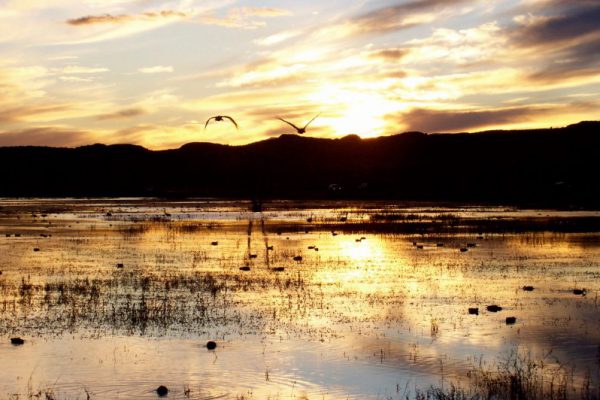The Land Conservancy of San Luis Obispo County is a non-profit working to protect water quality in San Luis Obispo County. The key component of their mission to permanently protect and improve county lands, for the benefit of people and wildlife.
Kaila Dettman, the Executive Director at The Land Conservancy, spearheads the work to minimize our impact on and improve water quality in waterways, riparian areas, creeks, and streams.
“Everything we are doing impacts water,” Kaila explains. For example, the 8,000-acre project they are working on at the headwaters of Lake Nacimiento is protecting the municipal-water resources for multiple cities in SLO county, and it feeds into the Salinas River helping counteract the saltwater intrusion in Monterey County. As well, their work in the Santa Rosa Watershed in Cambria protects a crucial resource in this water-poor community.
On a wider scale, The Land Conservancy, The Morro Bay National Estuary Program, and The Morro Bay Open Space Alliance are all working to achieve a healthier estuary through protection of properties and creeks that drain into the estuary. The Land Conservancy also has a long history of riparian and floodplain projects connected to the conservation and restoration of San Luis Obispo Creek and at Santa Margarita Lake, the headwaters of the Salinas River, and Nipomo Creek.
Conservation Easements
Two projects stick out to Kaila as especially noteworthy – the collection of North Coast properties participating in conservation easements including those along the west corridor of Highway 46 and the Pismo Preserve.
Conservation easements on the North Coast properties are voluntary agreements. Landowners willingly sell or donate portions of their development rights to protect and preserve their land while retaining ownership. “The people who own those properties have the most compelling stories. They have worked the land for a hundred years or more and are just really good, honest, hard working people,” Kaila says. Keeping the land development free reaps benefits for SLO county including no homes on the beautiful rolling hills, no increased water usage, and no incursions into wildlife habitat.
One benefit of the Pismo Preserve (an acquired 900-acre private ranch), is that by the end of 2018, the public can look forward to enjoying the trails of the new outdoor recreation area above Pismo Beach. Until then, The Land Conservancy holds weekly staff and docent led hikes and mountain bike rides to allow the public some early recreational access.
Now that the rains have come …
SLO county is experiencing the environmental aftermath. For example, the county has lost more than a few 300 – 500 year old oak trees. This year, the weakened older oaks soaked up too much water, became too heavy to support themselves, and fell over.
Erosion, though always a potential problem, was not as bad as it could have been this year on the Pismo Preserve. “With this year’s rain, we got lucky,” Kaila explains. “From October to December, the storms consisted of light rainfall, which allowed the grasses and vegetation time to start growing and establish their root systems. The rainfall trend allowed these root systems to form, thereby reducing potential erosion during the heavier rainstorms.”
Overall, this year’s rains have rejuvenated the land. There is water coursing through streams that have not flowed for five years in the Pismo Preserves. The green hills, vegetation rebound, wildflowers, and the return of many native plants, including the purple needle grass at the Pismo Preserve, are all from increased rainfall.
Wetlands Provide Water Quality Buffer
Aside from the loss of the county’s older oaks, the storms swept a huge amount of trash from the streets into the creeks, floodplains, and the ocean. Fortunately for SLO county, The Land Conservancy owns The San Luis Obispo Creek Floodplain Preserve which floods during most large storms. This year, it captured a large amount of the cities’ trash, preventing it from ending up in the ocean. As Kaila put it, “Creeks and wetlands provide a buffer for the impacts we have on the natural world and water quality.” The Land Conservancy will be hosting a Creek Clean Up Volunteer Day in April to pick up the trash in the floodplain and near the creek.
Through each project, conservation easement, and new property acquired, The Land Conservancy aids in helping more water soak into the soil and improve the quality of water running to reservoirs. Ultimately, it’s all connected and every project has some benefit for the improvement of water quality and water quantity!
Sign up for the WildNotes Newsletter for more access to environmental news and stories!



